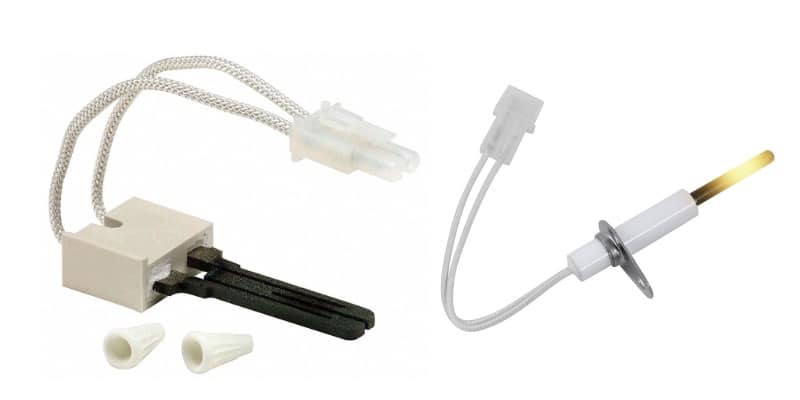

You’ve likely heard about pilot lights in gas furnaces, an age-old method of initiating the ignition. However, modern advancements have introduced a more efficient and safer alternative, the hot surface igniter (HSI). Dive into this technical exploration of hot surface igniter systems, their workings, and their significance in today’s heating systems.

Hot surface ignition systems have transformed the way gas furnaces ignite. Ditching the traditional spark igniter, these systems utilize a unique ‘M’ or fork-shaped component of either silicon carbide or silicon nitride. The magic begins when a high-current, low-voltage electricity surges through this igniter, raising its temperature to a sizzling 2500 degrees Fahrenheit.
Considering that natural gas can be ignited around 1163 degrees Fahrenheit and propane between 920 and 1020 degrees Fahrenheit, the electrical heat will effortlessly incite combustion in these gases. The pilot system is then ignited.
Safety is paramount. After the igniter heats up, a brief delay ensures the gas valve opens, enabling gas flow. But before the gas reaches the burner, the flame-sensing tech verifies the pilot’s lighting. Suppose any anomaly arises or the pilot fails to light. In that case, an immediate shutdown of the gas valve is initiated, preventing potential hazards.
Upon a heat request from your furnace:
A frunace flame sensor is the backbone of safety in HSIs. Detecting the heat from combustion, this sensor ensures power to the HSI stops post-ignition. If no flame is detected within a set timeframe, the gas valve is immediately shut off, preventing raw gas leaks.
A furnace ignitor is a quintessential component in the smooth operation of modern heating systems. When it malfunctions, not only does the warmth in your home disappear, but it can also raise concerns about safety.
HSIs usually operate at 120 volts, though exceptions exist. Knowing the correct voltage from your control board is crucial when replacing an HSI. Improper voltage can lead to malfunctions or even damage the new igniter.
Testing the HSI for continuity and resistance becomes essential if furnace ignition issues arise.
If the hot surface ignitor appears damaged or doesn’t pass the tests:
In conclusion, Hot Surface Ignition systems epitomize the fusion of safety and efficiency in modern-day gas furnaces. By understanding their operations and maintenance, you’re ensuring warmth and your home’s well-being.
Have been in the heating and air conditioning (HVAC) industry for over 20 years. He is person that will grow and thrive to learn more about the HVAC industry throughout his career. Mas Broto is also a blogger, who's dedicated to bringing you the best knowledge to get ahead in the game of life.